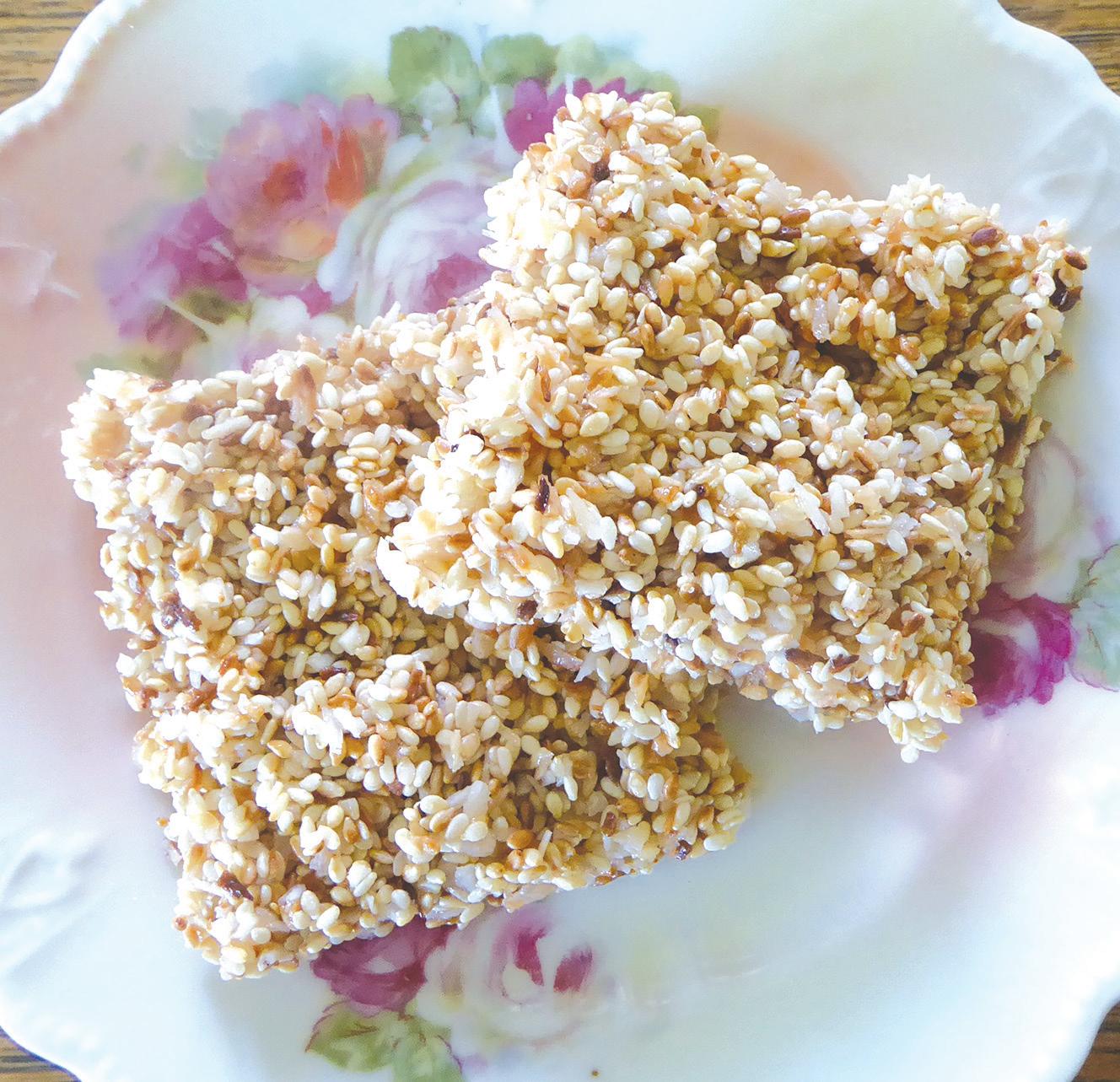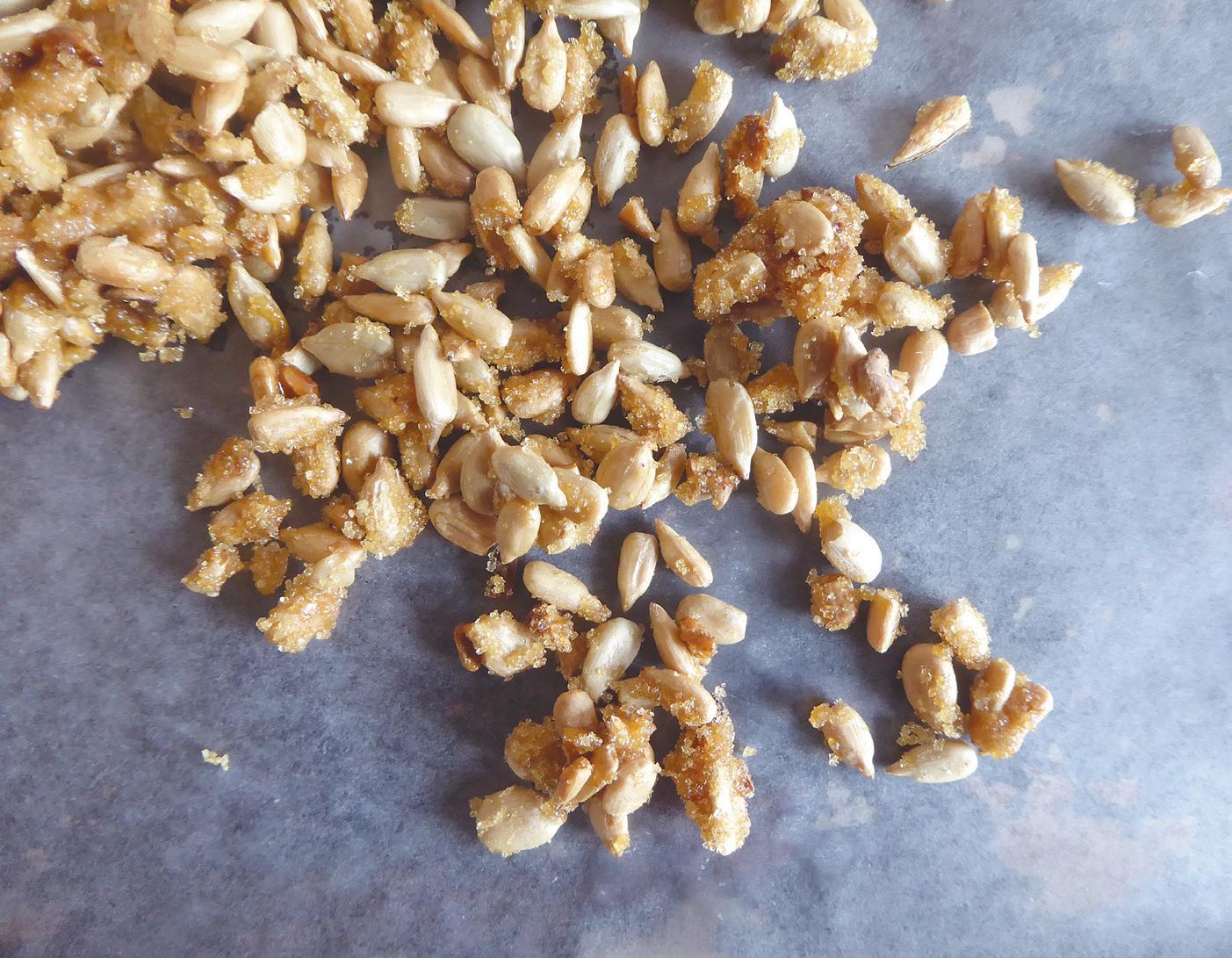
3 minute read
Kids in the Kitchen Plant the seeds of healthy eating

BY BONNIE AMBROSI PHOTOGRAPHY BY EMMA AMBROSI
Ilike it when simple kitchen projects expand our awareness of life in some way, and that is my intention with this column about seeds.
Seeds fascinate me. Did you know that every seed came from a flower? Flowers and seeds are two parts of the same process. Every seed is a tiny packet of life, and information in suspended animation, containing all the nutrients necessary to feed a baby plant. This makes seeds highly nutritious for animals, birds and humans as well.
Edible seeds come in an amazing variety. Why not go on a seed hunt with your children, searching your own pantry and freezer and the grocery store to see how many kinds of edible seeds you can find? Hint: don’t overlook the seeds included in crackers, breads and salad dressings. Here are some seeds to look for:
Seeds to eat raw, toasted or popped: sunflower, sesame, popcorn, pumpkin (pepitas), hemp, chia
Seeds that are spices: allspice berries, caraway, poppy, coriander, cumin, dill seed, fennel, mustard, peppercorns, Seeds to sprout: alfalfa, broccoli (some grocery stores, such as Whole Foods Co-op, sell seed-sprouting supplies — another fun project!)
Seeds you might have in the freezer: peas
Whole grains are essentially seeds: buckwheat, oats, quinoa, rice, wheat berries, wild rice
Some fresh fruits and vegetables we eat, seeds and all: strawberries, figs, tomatoes, cucumbers
Not all seeds are edible! Here are some fruit and vegetable seeds we don’t eat: apple, pear, melon, peach pits, apricot pits, cherry pits, avocado pits
More seed activities
After your seed hunt, here are additional interesting things to do with seeds.
Compare seeds. Spread out several types of seeds — edible or inedible — on paper towels. Notice that seeds can range from very large (avocado pit) to very tiny (chia seeds). They can be black, brown, red, or white. They can be round, or flat, or long and thin (wild rice), or even triangular (buckwheat). Every seed, big or small, came from a flower, and was formed with all the life and information needed to make a new plant.
Sprout garden seeds. Any seed that you would plant in your garden can be pre-sprouted indoors. Place several seeds on a damp paper towel. Fold the towel over or cover with another damp paper towel and place the entire thing inside a plastic bag. Put this seed bag in a warm — not hot — place and check it after 3 or 4 days. Keep the paper towel damp by spritzing it with room temperature water if needed. Different seeds sprout at different rates, so don’t give up. When your seeds sprout, examine them closely — use a magnifying glass if you like. Then carefully plant the little seedlings in the soil, taking care not to break the tiny roots. It’s okay to tear off part of the paper towel along with the seed — better to do that than break the root. Hint: This is fun to do with any seed, but beans are the biggest and easiest to observe.
Pan-toasted Pepitas
½ cup or more raw pumpkin seeds (pepitas)
Pinch of salt, optional
In a skillet on the stove top, toast pepitas over medium-low heat for about three minutes, stirring gently, until most seeds are golden brown. If desired, sprinkle on a pinch of salt. Remove from heat and allow to cool before eating. Note: you can prepare raw sunflower seeds the same way.

Chewy Sesame Bars

¾ cup raw sesame seeds
½ cup unsweetened shredded coconut
½ cup maple syrup
¼ tsp salt
Toast sesame seeds and coconut in a large pan over medium-low heat, stirring gently, until seeds and coconut turn golden — just 2-3 minutes. Pour the mixture into a bowl so it doesn’t continue to toast, and set aside. Combine maple syrup and salt in a pan and cook over medium heat, stirring occasionally, for about 4 minutes, until the syrup thickens a bit. Pour the syrup over the seed-coconut mixture and stir to combine. Spread this mixture onto lightly oiled parchment paper on a baking sheet, using a spoon or wet hands to pat it out flat, whatever thickness you prefer. Use a table knife to score the mixture into bars, then allow to cool. Refrigerate to set more quickly and firmly.
Caramelized Sunflower Kernels

1 cup raw sunflower seed kernels
¼ cup brown sugar
In a skillet on the stovetop, heat sunflower kernels over medium-low heat for about 3 minutes, stirring occasionally, until most of the seeds are golden brown. Stir in the brown sugar, stirring gently for about 3 minutes more, until the sugar melts and kernels are coated. Turn out onto waxed paper to cool. Store cooled seeds in a tightly sealed container at room temperature. This recipe is from the National Sunflower Association.










